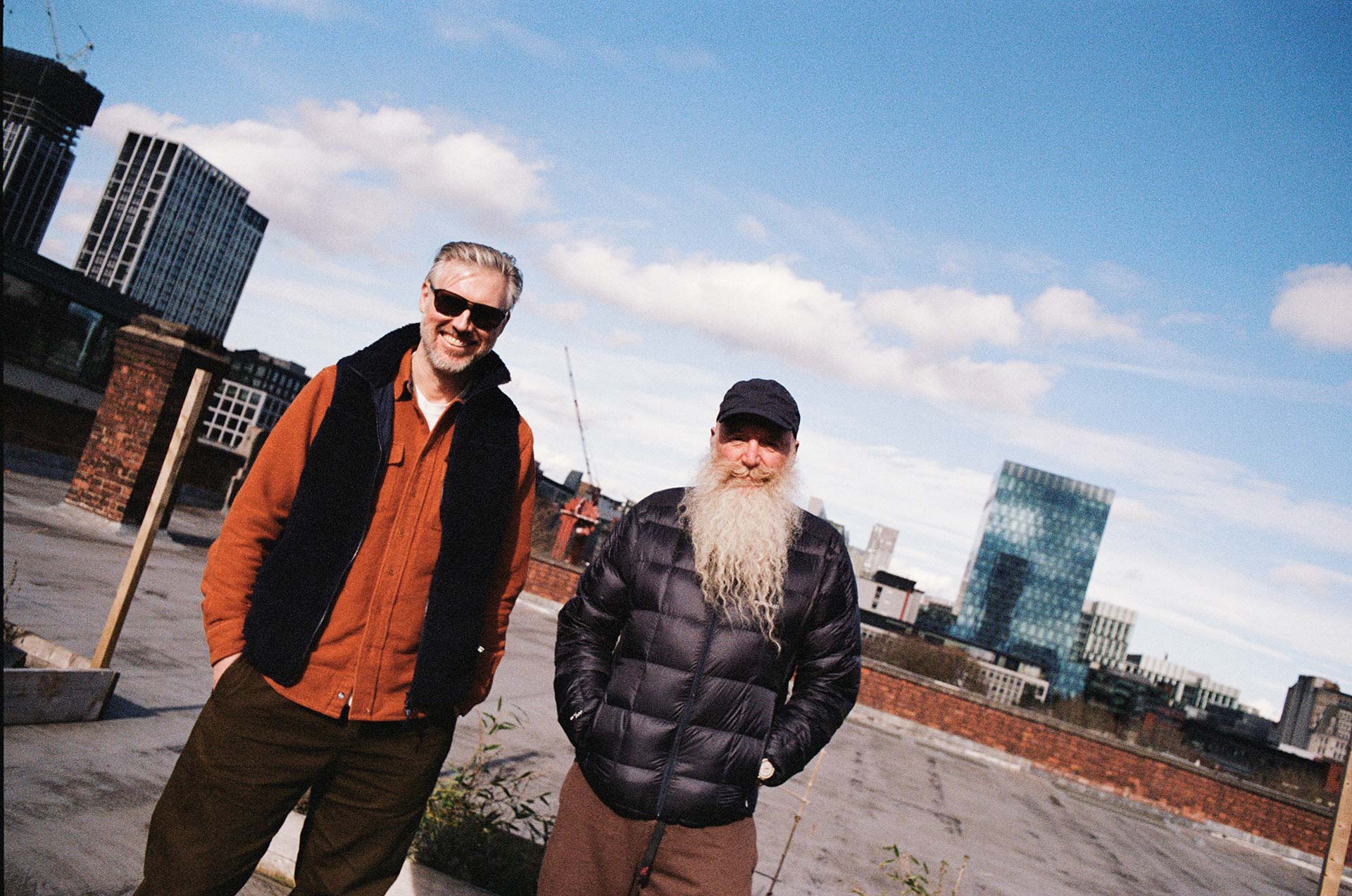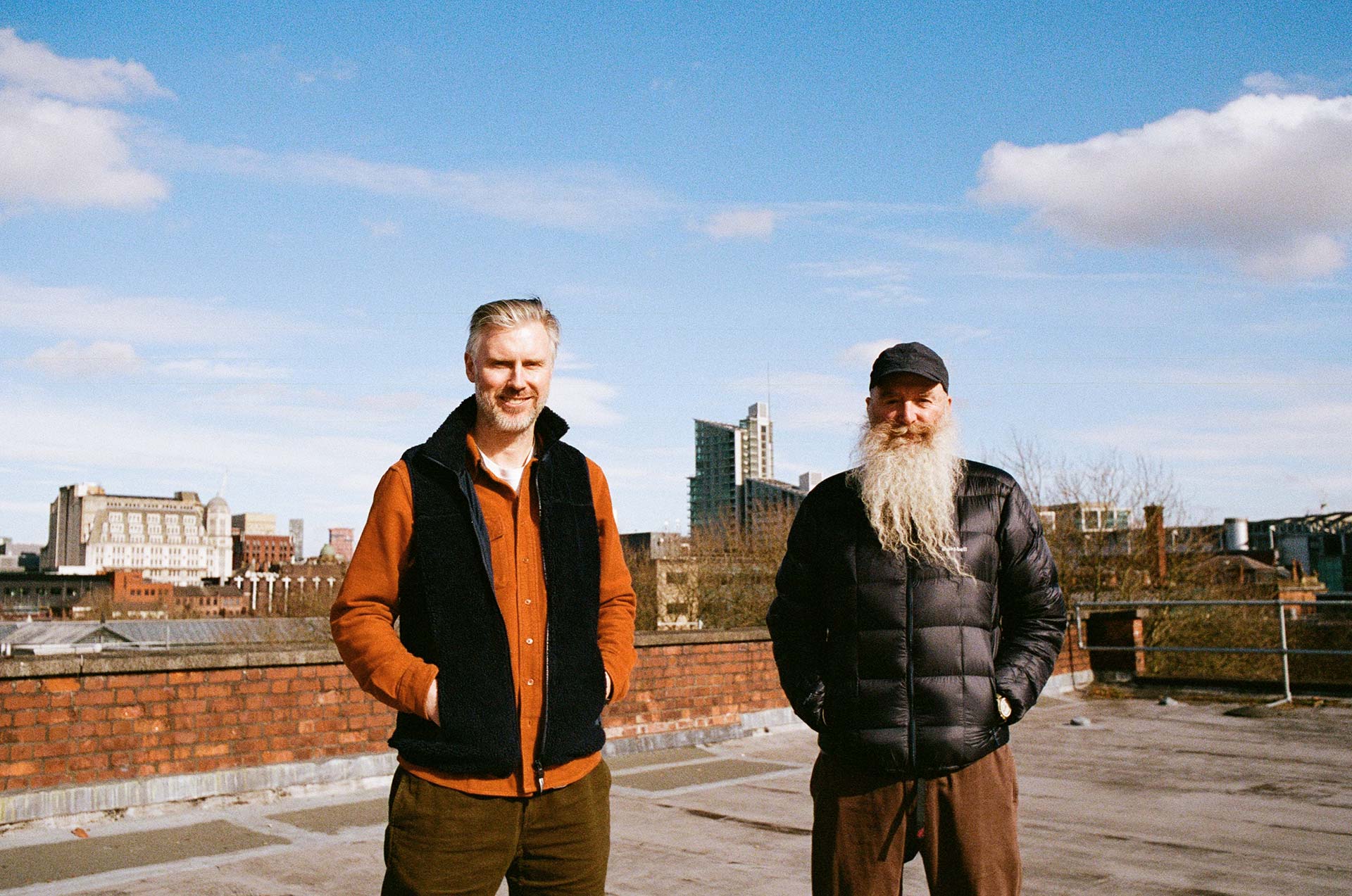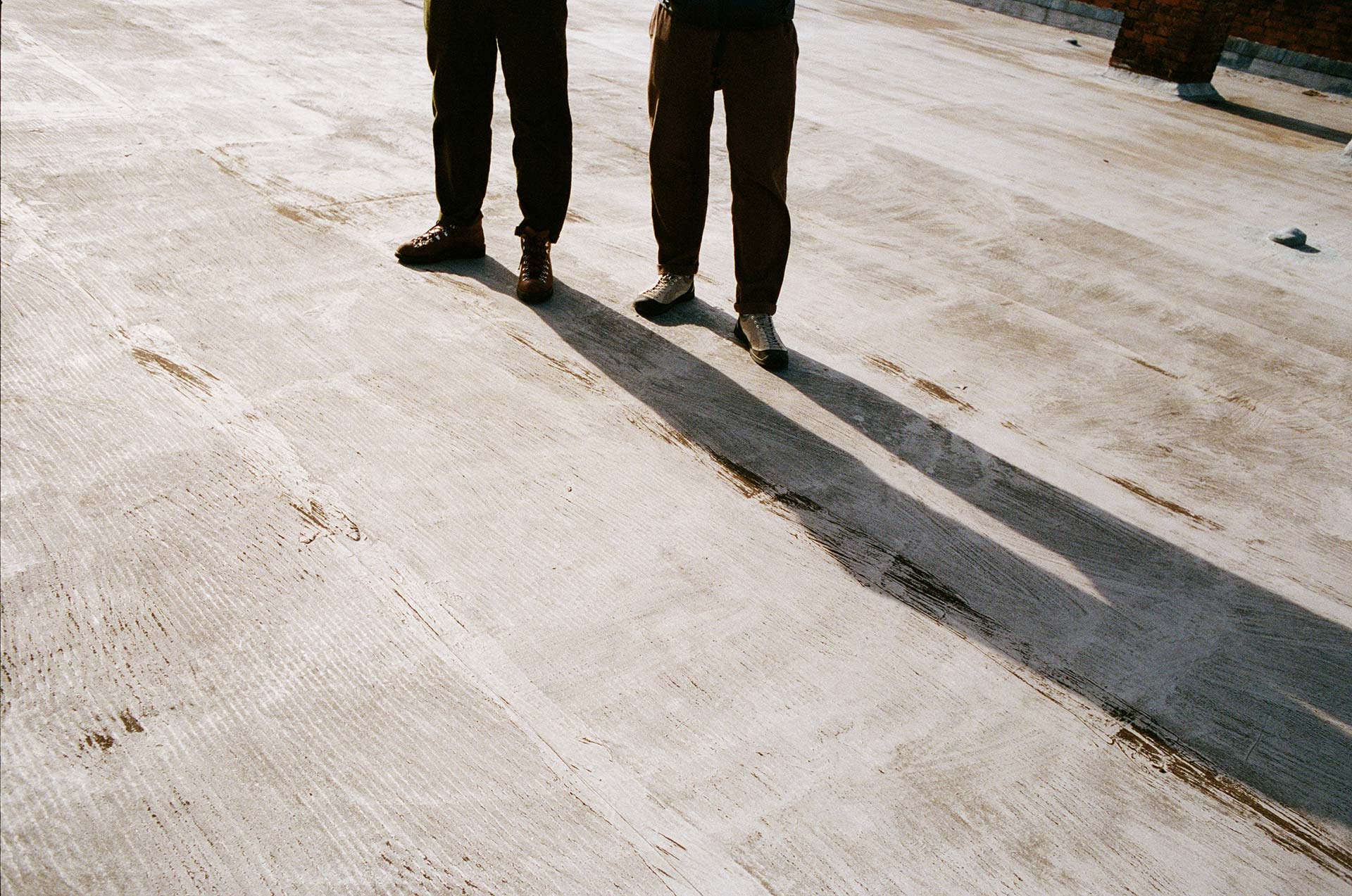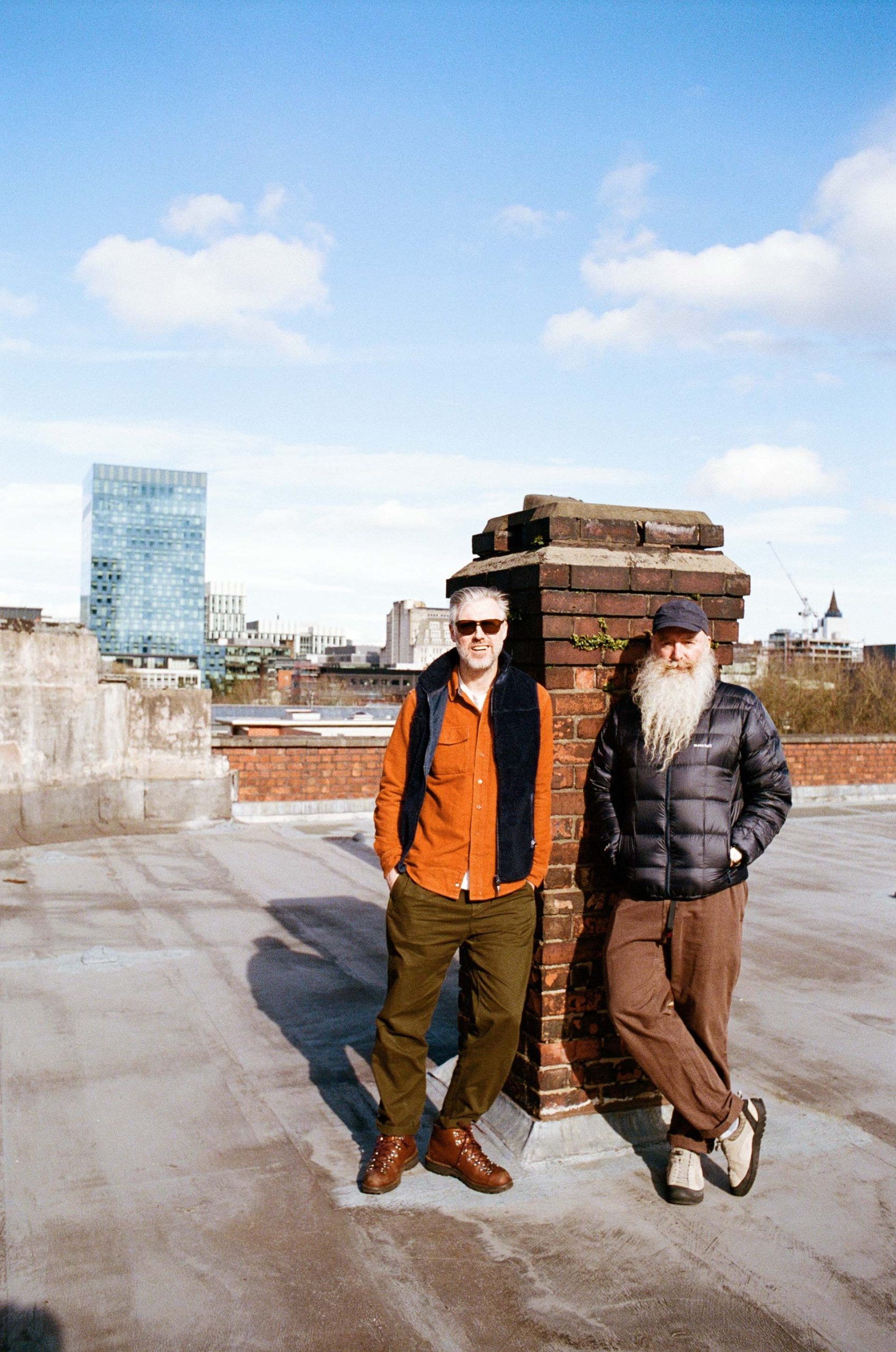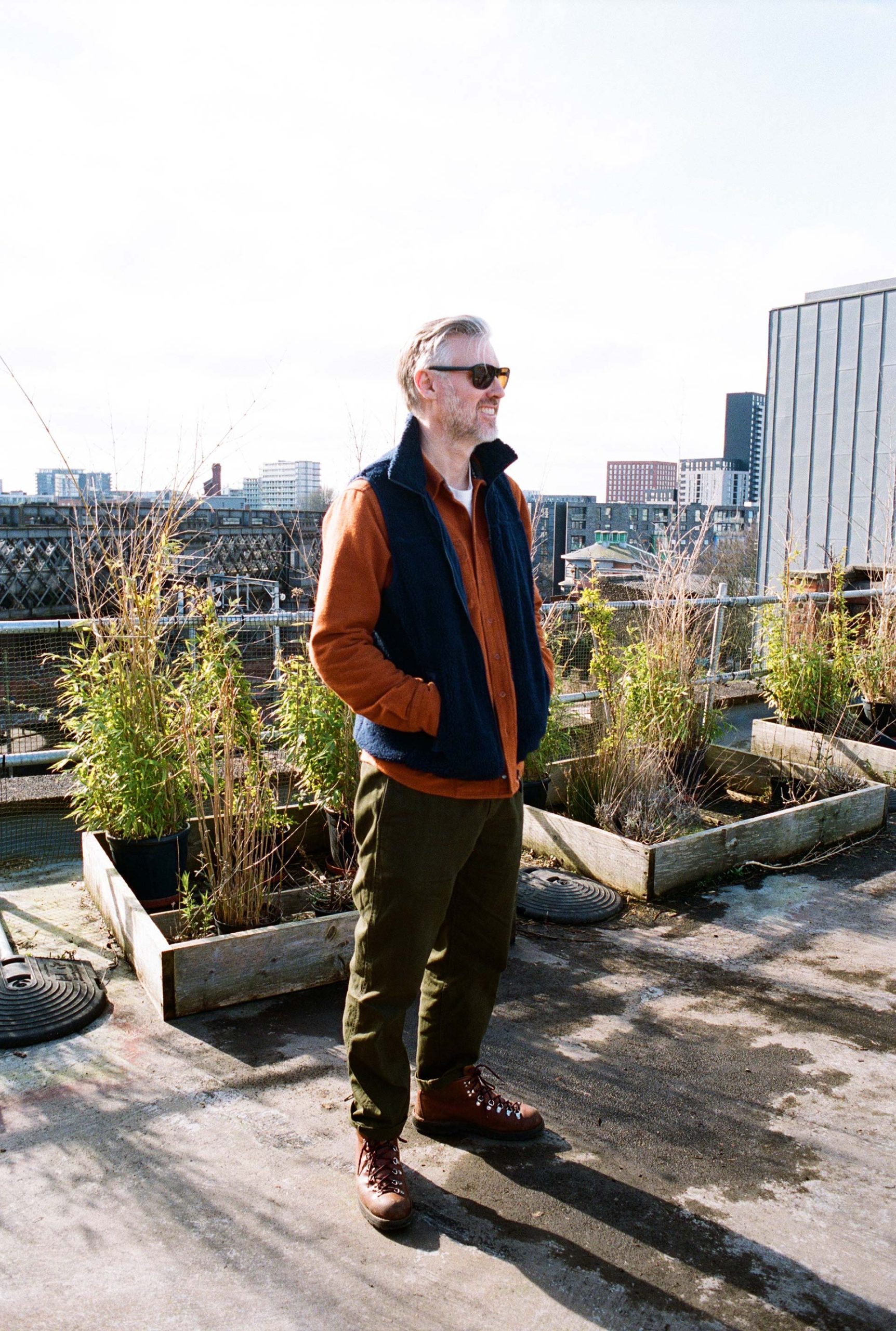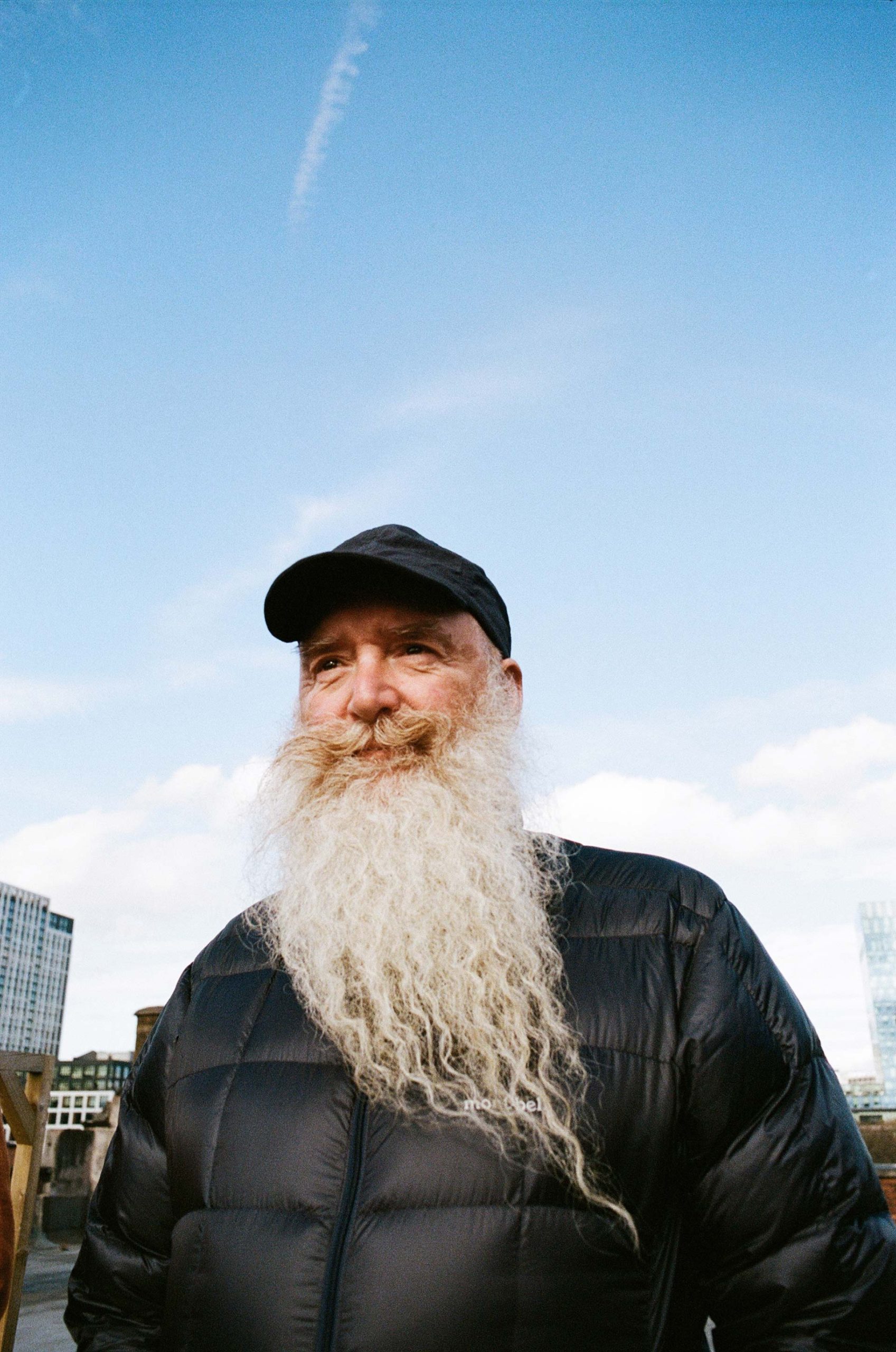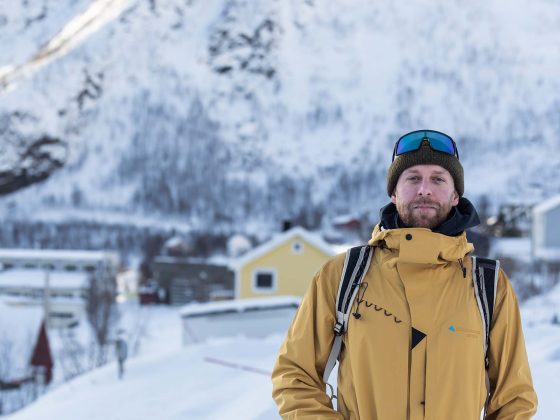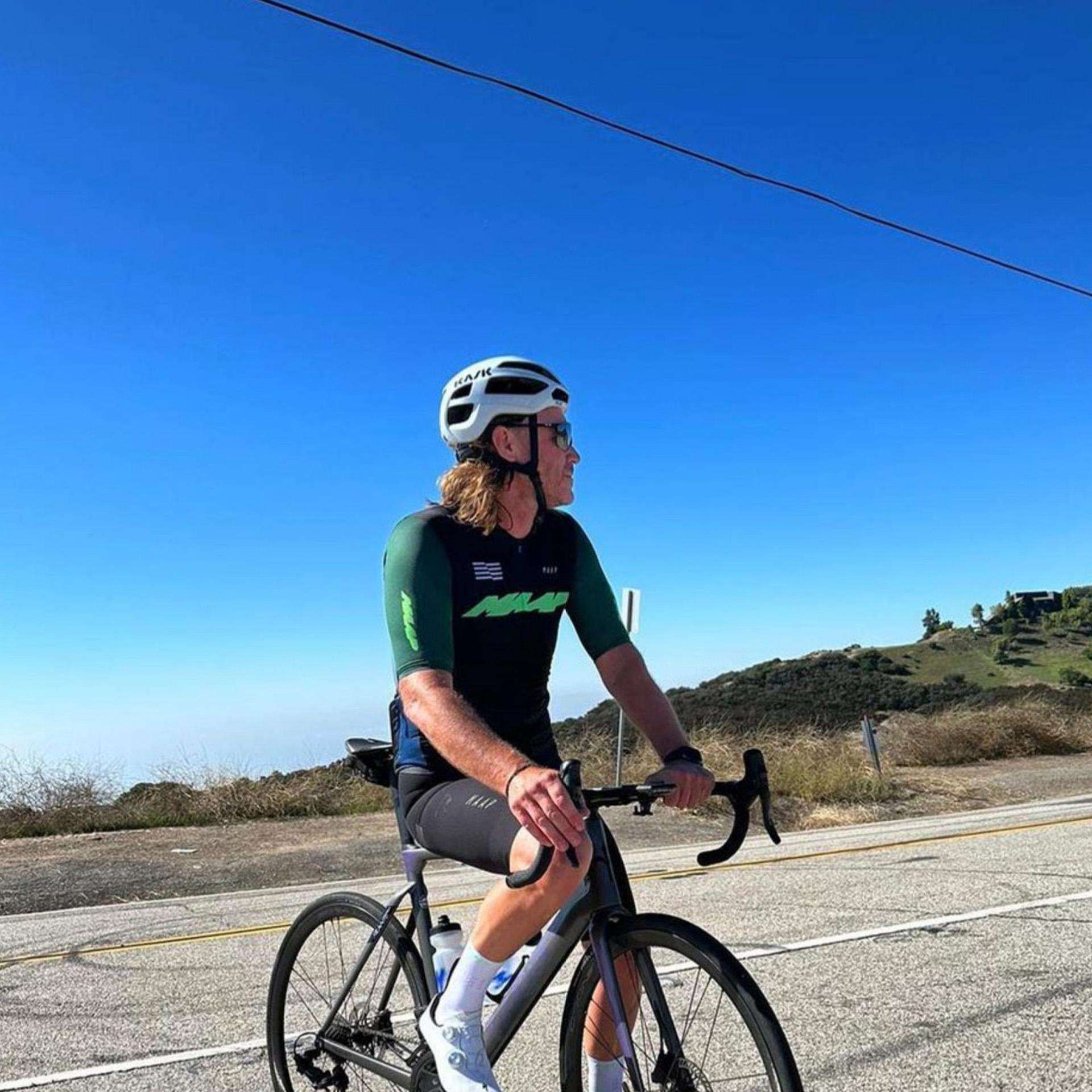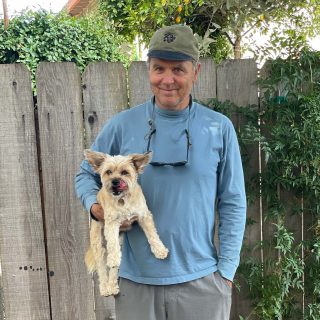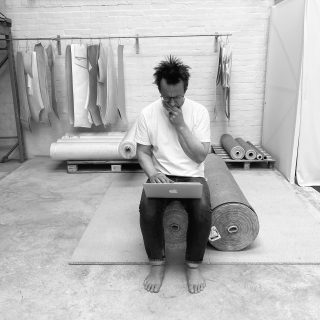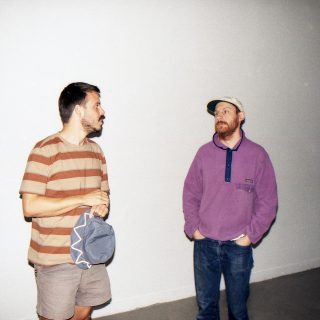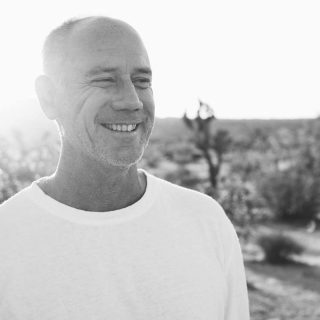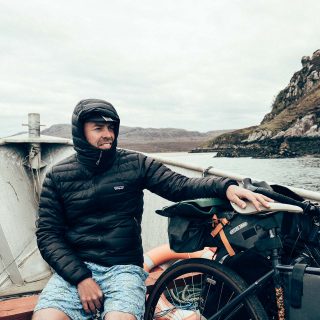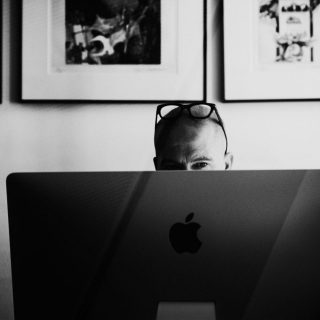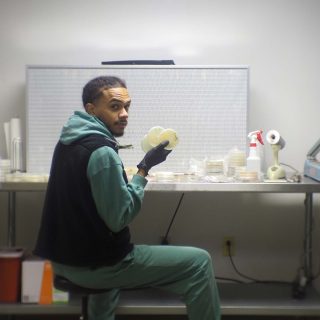An Interview with Rob and Fred from Wisdom and Effort
A conversation with the modern outdoor pioneers
You don’t have to be a Kendal Mint Cake chompin’ mountaineer to notice that the outdoor clothing industry has had a bit of a shake-up over the last few years, with new brands, new ideas and a new generation helping to create a more modern take on the great outdoors and the clothes we wear there—less about extreme feats and unattainable peaks, and more about normal folks spending time outside in nature.
Founded in 2017 by Rob Brigham and Fred Royle, Wisdom and Effort have probably played a bit of a part in this.
Operating out of the Ellis Brigham stable (the legendary outdoor shop founded by Rob’s grandfather) Wisdom and Effort are not only the people behind Outsiders Store (a forward thinking multi-brand shop which merges time-honoured names like Danner and Patagonia with fresh upstarts like Rayon Vert and Bedrock Sandals), but they also look after brands like Gramicci and KAVU over here in Europe. They make hats too.
We’ve worked with them for a good while now, but for some reason we’ve never sat down to give them the interview treatment… until now. In this conversation we talked about their early days, their thoughts on ‘modern outdoors’, and where they think it’s going next…
Going right back, how did you get into all this stuff? You were selling snowboard gear weren’t you Fred?
Fred: I’d always been into clothes—coming from youth-culture and punk and post-punk and making stuff—so I ended up doing a clothing and design technology degree at Manchester Polytechnic, and then we opened up a shop in Affleck’s and had a unit on New Mount Street, which was where James and Inspiral Carpets and all those people were. It was one of those early buildings where you could have loads of creative businesses. My shop was called Big Banana—and we made all that Madchester type gear. You could basically go to Cheetham Hill and buy deadstock fabric, and then we had sewing machines, so we’d make stuff and sell it in the store.
Then we started buying other stuff off other brands, and because it was a moment when everyone was looking at Manchester, you ended up in a situation where people were coming in and you got to know other people who had shops. People from Bristol who had a shop would drive to Manchester and come to Affleck’s, and they’d go, “Can we buy some of this for our shop”. So you ended up wholesaling, before you even knew what that was. We built up a network of stores that we knew in the country and we were selling to—and other people were like, “Can you do that for me?”
And then I worked for this UK t-shirt brand, called Dosse Posse, which was those hip-hop illustrations characters—and it basically blew up—so I was just driving around the country flogging that. That went really big, and we ended up doing trade shows in New York and Japan—so my network of people I knew and worked with just got bigger and bigger.
And then I got a bit tired of it. That club scene, it felt like you were part of something—you were making clothes and you were selling clothes, but it was because you were into music and you had all these reference points. But then you ended up with all these menswear shops who just saw that they could make some money—but they were into playing golf—we had no connection with them.
But at the same time, coincidentally, I started snowboarding, and that was a community—it was another scene—so that made me more interested. And then because I was selling clothes, a snowboard brand called Westbeach approached me and it was perfect—it was the main thing I was into, and I could combine it with the network of people that I’d built up, so I seamlessly went from doing streetwear or clubwear or whatever it was called at the time, to doing snowboarding stuff. And I’d learned about making technical apparel when I was studying, so understanding how to make a snowboard jacket wasn’t a massive leap.
And I used to sell it to Rob, which is how I got to know him. He was a snowboarder and like-minded, so that was the start of the relationship.
Rob: I was thinking about this last night. We drove out to a snowboard fest around ’97 or ’98. We were sponsored by Subaru at the time, so we had a Subaru Forester—and I remember halfway to Austria Fred got the shit scared out of him and he decided he’d drive the rest.
Subscribe to our newsletter
Being part of the Brigham family with such a history of selling outdoor clothing, did you always want to get into the family business Rob?
Rob: Yeah—I never didn’t want to do it. I’d always been around the ski-industry—I was selling ski-boots when I was 13, but then a year or two later snowboarding turned up and I went from loving skiing to absolutely loving snowboarding. My whole world revolved around that as soon as it turned up.
When did snowboarding arrive in England? It’s weird to think there was a time before something like that.
Rob: 88 maybe?
Fred: It was a weird thing. Because I was making some money selling clothes I’d decided on a whim to go on a winter holiday—so I went to Rossendale to learn to ski, and there were loads of people snowboarding. I’d never heard of it before, but I’d been a skateboarder, so I thought, “Why don’t I try that?” I had one ski lesson and then became a snowboarder.
Rob: As soon as it turned up, I was obsessed. When I finished school I went and worked at our store in London for a year, and then went to university to do business studies, because I wanted to work in the business. When I finished one of our good friends Jeremy Slayden was heading up our snowboard store—the Snowboard Asylum—and he went, “Right, you’re going to run this one day, so you better get in my van and go and see all the shops.” I’d been going to all these locations for many years, but that’s when I suddenly realised what it was, and started working out what I could do.
From that moment I was always on a mission to change the company for the better, and make sure it was accessible to everybody and that it had a modern twist on skiing, snowboarding and the outdoors. We’ve always been an outdoor store since 1933, and then skiing came in the 60s when my dad discovered it, and then snowboarding came along in the 80s—and we were the first people to stock snowboards on a large scale.
The reason I wanted to work in the industry was the people—it’s full of enthusiastic, passionate people who love what they do, which makes it a joy to work in. I think if you’re just selling for selling’s sake—for putting cash in the bank—it’s soulless, you might as well be selling tins of beans.
Fred: Absolutely. I had a customer who got into selling mobile phones, right when they first started to appear—he was making a lot of money—and he’d say, “You want to get into this!” But there was nothing in it that interested me, other than making some money, and that wasn’t enough.
So you realise at that point that it’s actually about a connection with the products that you’re selling and the people you’re selling them to. I think with this latest wave—we call it ‘modern outdoors’—with all those people, there’s a shared attitude to doing things outside, whether it’s on a bike or walking or camping—so when you’re selling products that make those activities better, then everyone from the designers to the marketeers, all the people in those businesses are like-minded, and that’s what makes it interesting and worth getting up in the morning for.
When did Wisdom and Effort come about? What was the spark behind that?
Rob: We started working together probably over a decade ago now.
Fred: Basically, I have a sweatshirt brand called Good Measure. Long story short—I went from making things in Manchester, to being in Vietnamese outerwear factories for the snowboard brand I worked for, and I thought to myself, “Wouldn’t it be great to make something in England again?” So with my friends Carl and John we proved that you could actually make sweatshirts in the UK.
Then with my knowledge of UK production and Rob’s desire to follow in the family footsteps of British outdoor manufacturing, we thought, “Why don’t we bring those two things together and create a brand.” So we made RMBLR, which is UK-made hats, predominantly. And then everything sort of followed on from there.
Rob: Yeah—once we started the conversation we realised we were both seeing this new outdoors thing—the type of people going outdoors were changing. They didn’t identify with the traditional outdoor store, but they were picking up the same brands from elsewhere—maybe good second hand stores or direct from brands—but there wasn’t a retailer that sat in that space.
So the RMBLR conversation quickly started morphing and we started to create a range within Ellis Brigham—but that didn’t sit well with us either—it didn’t feel true to what we were trying to achieve, and that’s when Outsiders Store was born. That gathered momentum pretty quickly as there were a lot of similarly minded people going, “Yeah, that’s what we’re looking for.”
And pretty quickly we saw that all the brands we wanted to stock weren’t represented in the UK—or they were represented poorly, which meant there was an opportunity to see if they wanted to work with us.
Fred: KAVU was the first one. When Josh came on board at Outsiders, he showed us the brand and said how much he liked it—so we connected with them and that was the first brand that we took on as distribution.
What was it you were looking for at that time? How do you describe this ‘modern outdoor’ thing? What was it that set it apart from the traditional outdoor shop stuff?
Rob: What was interesting was that as soon as we started gathering the right people to make Outsiders Store work, and to fit in this modern outdoor area, was how important function, form and authenticity were. Nobody wanted a knock-off outdoor jacket made by a fashion brand—and nobody wanted an outdoor brand who was making fashion. We wanted real outdoor stuff.
It went in a direction I didn’t really expect—I thought it would be about Japanese brands or American brands, and not about hydrostatic heads and the powerfill of your down. But it wasn’t at all—it was really important that the product had a true end goal—a true purpose and a reason to exist—not just some frivolous fashion thing. And that was music to my ears—because that’s what I’d always done.
“Modern outdoors to me was these people who didn’t identify with pictures of people with ice-axes on top of incredible peaks, it was people who came from skateboarding or clubbing or music or BMX or wherever, and wanted a better outdoor product, from brands that had a different sensibility or a different attitude.”
Fred: To me there are parallels with when skiing had been around forever and snowboarding turned up. It was still sliding down the hill on something, but it had a totally different attitude. I think even the people who started skiing would argue or accept that it had stagnated, and this punk rock version of it turned up with a different attitude and a swagger, and reinvigorated the whole industry.
If you look at something like The North Face—at the launch party, which I think Rob’s dad went to, the Hell’s Angels were on the door and the Grateful Dead played—and then compare it to today and it’s owned by VF Corporation and is very, very straight-laced. Or Rab—you maybe need to fact-check this, but I heard their first shop was above a brothel in Sheffield. These were gnarly brands with attitude. But then 30 years later when they’re a bigger commercial concern, they have a different tone of voice and feel about them.
So modern outdoors to me was these people who didn’t identify with pictures of people with ice-axes on top of incredible peaks, it was people who came from skateboarding or clubbing or music or BMX or wherever, and wanted a better outdoor product, from brands that had a different sensibility or a different attitude.
And that’s what we saw in KAVU—they don’t take themselves too seriously, they make great product and they’re great people, so it just felt like a perfect fit.
Nowadays a lot of brands just focus on having their own online shops—but how important is it to have a multi-brand thing like Outsiders? So many have gone over the last few years.
Rob: I think unless you’ve got a true mix of all the aspects, then you’re going to have a problem. There should always be a place for retailers that sell multiple brands, because if there isn’t, how do you do a comparison? Maybe that’s not so important in fashion, but it’s very important when it comes to technical goods like outerwear or walking boots or snowboards—all of those things, from different brands. If you had to go to different shops to discover each brand then it’d be laborious.
“Being all things to all people is a quick way to disaster.”
Fred: And a lot of those things, the online only experience doesn’t really work. I know there are virtual fittings and a lot of smart ways you can take some of the legwork out of it, but the experience of going to a store where there are experts is hard to beat. Footwear is a really good example—somebody’s shoe might work on your foot, whilst others don’t, so the best way of finding that out is being in a store with some experts and trying them on.
Rob: It was really important to us on day one of Outsiders Store that it wasn’t just a website. I think we actually opened the store before the website in the end because the site got delayed—but it was very important that it had a physical reality to it and it wasn’t just a website that people didn’t know and couldn’t trust, a site without an address so you couldn’t go and feel the goods. I do feel that if you don’t have that physical entity, and you don’t meet your consumer where they are, then you’ve got a bit of a problem—you’re just at the beck and call of a search engine.
It gives you a flavour too. If you go into a shop and they’ve got a certain album on, and the people who work there dress a certain way, you instantly get an idea of what the place is about.
Fred: From the beginning it was like, “What does it smell like? What does it sound like? What does it look like?” All of those things should be considered. Look at the best shops in Japan and that’s the case. Japan is such an interesting one though because you’ve got people like Function Junction, where it’s just chaos—it’s like a cupboard full of the most incredible stuff.
I’ve seen that one. It looks like an old army and navy store or something, just crammed with outdoor gear.
Fred: Yeah—if you had an army and navy store that had twice as much stock as it could fit, and you crammed it all in, that’s kind of the vibe… but it works. You can stand looking at a wall of stuff for twenty minutes and still see something new that you haven’t seen before. So on one hand I can go somewhere like that and think that it’s amazing, and then there are the Nanamica or And Wander stores, and they’re clean and slick and there’s attention to every detail—and you can be inspired by that too.
Is it about re-contextualizing things sometimes? Quite often a brand has some amazing stuff in their archive, but they don’t recognize how good it is.
Fred: Definitely yeah—that outside perspective is important to be able to see the wood from the trees. And sometimes brands just forget. As brands grow and become more successful, maybe it’s harder for them to take those riskier decisions and make more interesting products. You can become a victim of your own success—you can be a huge success, but that can change your opinion of a brand.
Rob: A brand can forget that authenticity thing quite easily—and a lot of brands do forget that, even when their back catalogue is full of classics. They need to keep reinventing that, or looking back and referencing that—but it’s a lot easier if the brands are true to that, and they’ve actually got something authentic.
Like with Gramicci and their climbing pants—they could have moved away from that and gone chasing some other thing, but if they did they would be leaving it to other outdoor brands to do what they did best. So sometimes our job is just to remind brands of what they’ve got, rather than reinvent the wheel—it’s about saying, “This is what you’re great at, let’s focus on it.” Being all things to all people is a quick way to disaster.
And like you say—people want the real thing. The customer is a lot savvier now too—they generally know a lot about what they’re buying.
Rob: Yeah, the customer has an infinite library of information on their phones. Having said that, if you don’t go and ask an expert, you can still miss a lot of that information. In the outdoor industry at large we have this conversation where we worry about people getting into the outdoors, and accessing places they’ve never been before, without knowing how to do it.
We’re not being condescending about that, but if you set out on an eight hour walk, there’s not going to be a bathroom or a restaurant halfway around. People used to go into a store and say, “I’m thinking of doing this walk,” and the staff behind the till would say, “Really, I’ve done that walk before… “ and pass on that local knowledge.
But if you just focus on researching the best Gore-Tex jacket, looking at all the brands, and doing all the research in the world, before going off into the hills, there are no conversations with anyone to say, “That’s probably not the right product for you, actually you’d be better off with this.”
With snowboarding we’d get customers coming in going, “That’s the snowboard I want.” And when we asked if they’d snowboarded before, they’d say, “No, it’s my first time, so we’d have to say, “That is for an advanced expert, you don’t want that product.” We’d be talking them out of buying a £600 product for a £250 one, but they’d break their neck on the first one, and they’d love the second.
How do you do that in a way that’s helpful rather than condescending?
Fred: I think it’s a tone of voice thing. You want the staff to know their stuff, without challenging you about where you’re going. In traditional outdoor stores they almost wear their technical knowledge as a badge of honour—but it’s about using your knowledge to support the customer in making the right decision, rather than making them feel bad because they just want to buy a nice jacket, but they’re not going on some insane expedition.
Rob: Anyone can wear the same jacket for a school run, or climbing a mountain—it does the job for both. So we shouldn’t be dismissive of how someone wants to wear it.
I suppose the outdoor world—like bikes or fishing or pretty much everything else men can become obsessed with—can easily become this boy’s club that’s sort of hard to access. But it feels like in the last ten years there’s been a bit of a mind shift, and people are being more open. Is there still a way to go?
Rob: There are a lot of people who still don’t go outdoors enough. There’s a freedom and a release that you get from walking in nature that you just don’t get from being in a city or being indoors—the fresh air, the exercise and the greenery.
The outdoors is really accessible as well, but that’s a thing that most people forget. You’re not that far from going on a nice walk, anywhere in the UK. You’d be forgiven for thinking that we’re surrounded by concrete. If you wake up in an apartment, and then you drive along the tarmac to where you work in another big block of concrete, you don’t see nature, but actually when you look at an aerial shot of the UK, there’s a lot of green, and it’s usually only a short train ride away.
Here we are in the centre of Manchester, but I can get a tram to Altrincham and go on a walk around Dunham Massey, or I can get on a train and be in Edale in 50 minutes. And that’s a great day out—you can make a real adventure out of it.
So yeah, “the outdoors” has a long way to go, and a lot more people should be able to experience it. It’s great that it’s having a fashion moment, but the worry is that you end up with loads of high street brands selling look-alike products that perhaps aren’t good enough for the storm that you’re going to encounter.
Fred: I think that whole gorpcore thing will evolve into something else—but in the same way that workwear is still around—it won’t go anywhere as the limelight moves somewhere else slightly. Outdoor product has always been around in the north west of England.
Rob: Talk to the older generation from Brigham’s and they’ll say how Manchester has always been a real capital for the outdoors. You’ve got the Lakes to the north, Wales to the south and the Peaks to the east. You’re surrounded by it, so it’s always been big here… plus it rains, even if you’re not going into the hills.
Rounding this off—where does this modern outdoor thing go next? It feels like things are becoming a lot more accessible.
Rob: There’s been a lot of interest in climbing in particular. That’s been a modern phenomenon almost aside from the outdoors where there’s been a boom in climbing gyms as an alternative to lifting weights. A lot of people are on that—and I think as that progresses it’ll be interesting to see if people take that outdoors more and it becomes a broader thing that everybody does. I think it should be, but I don’t know if it will be.
The outdoors is now particularly concerned about its accessibility—and now there are paths so that everyone can access the positivity of nature. And then I think a lot of the movements like Muslim Hikers and Flock Together are great at bringing the outdoors to people who didn’t think it was for them.
Twenty years ago when I went up a mountain, you hardly saw women there—and if you did, they were being dragged up by an overenthusiastic boyfriend, but now, wherever I go, I’m seeing groups of women enjoying the outdoors.
Fred: When we started doing this, we were thinking, “Where are the women’s brands?” The dismissive term was ‘shrink it and pink it’—that’s all brands were doing for women, but there are interesting brands like Hikerkind coming through now that are making interesting stuff, so it’ll be good to see how that develops. Ten years ago it was much more of a challenge to find that stuff.
Rob: As for where it’ll go in terms of technicality, I think there’s a drive to more eco-products—like with Gore-Tex removing the forever plastics and forever chemicals from their products. Things will always evolve—the great thing about outdoor products is that they’re born out of a need, rather than just, “Oh well, this season lilac is in fashion.” With the outdoors there’s always a mutating need, whether that’s what people need, where they need it, or the changing conditions—and that’s as changeable as the weather.
Find out more about Wisdom and Effort here.
Read our interview with Josh and Nick from Outsiders here.
Interview and photos by Sam Waller.
